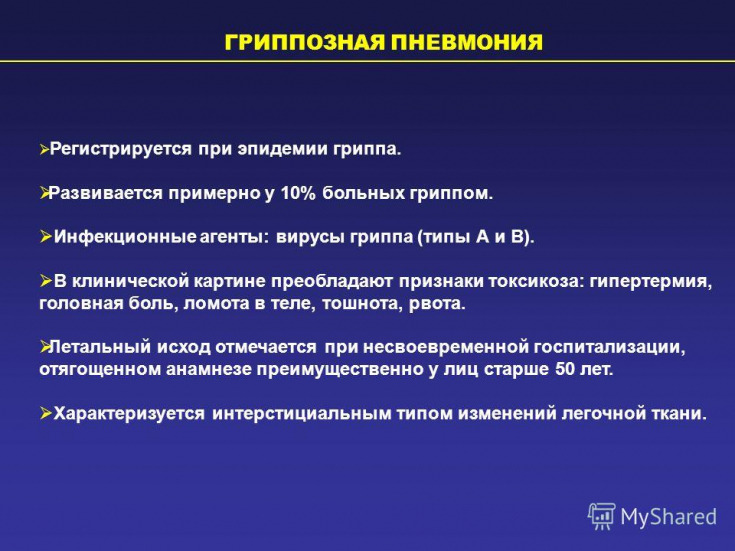Pneumonia caused by the influenza virus, associated with an uncontrolled reaction of the immune system. Patients with influenza pneumonia usually receive corticosteroids, which may play a role in suppressing inflammation through mechanisms such as reduced production of pro-inflammatory cytokines/chemokines.
Animal studies have shown that corticosteroid therapy reduces mortality. However, the results of clinical studies of the effect of corticosteroids remain questionable.
Learn in this article on estet-portal.com about the features of the use of corticosteroids in influenza pneumonia.
Study on Corticosteroids in Pneumonia
Some studies have shown no significant effect of corticosteroids on mortality, while others have found that early corticosteroid therapy is potentially harmful in patients with influenza pneumonia.
Follow us on Instagram!
Thus, researchers from China conducted a literature review of the Cochrane Central Register of Controlled Trials (CENTRAL), MEDLINE, Embase, PubMed, etc. to assess the effect of corticosteroids on mortality in adult patients with influenza pneumonia.

Effects of corticosteroids in patients with pneumonia
Scientists have found that corticosteroids not only increase mortality, but also increase the length of stay in the intensive care unit. There are several potential mechanisms that may underlie the higher mortality reported in patients with pneumonia treated with corticosteroids.
The Secret Danger of Air Conditioners: Diagnosing and Treating Legionellosis
Firstly, corticosteroids reduce systemic inflammation. After the virus enters the body, the immune system is activated, and corticosteroids suppress the immune response, which, in turn, can lead to prolonged viremia.
Dangerous city pigeons: principles of diagnosis and treatment of psittacosis
One study showed that patients who received corticosteroids had lower procalcitonin levels and more severe immunosuppression. Second, patients receiving corticosteroids are more likely to develop secondary bacterial pneumonia caused by immunosuppression. Thirdly, as a result of the immunosuppressive effect of corticosteroids, the risk of developing critical conditions increases. Fourthly, corticosteroids are associated with the development of such adverse effects as cardiovascular events, arrhythmias, which also increase mortality in patients with influenza pneumonia.
Early corticosteroid therapy is potentially dangerous in patients with influenza virus pneumonia.
Corticosteroids for bacterial pneumonia
In studies examining the effect of corticosteroids in patients with bacterial pneumonia, a positive effect was found. Patients with bacterial pneumonia are reported to have better outcomes when treated with corticosteroids with appropriate antibacterials, and early antiviral therapy may also reduce mortality.
However, the investigators note that patients who used corticosteroids were more likely to have superinfections such as secondary bacterial pneumonia or invasive fungal infection, and they also had more exacerbations of the underlying condition and were longer in intensive care units.
Corticosteroid options
It is important to note that the effects of corticosteroids may depend on several factors. Corticosteroids may be beneficial in patients with oxygenation index <300, but increase the 60-day mortality rate in those with >300 oxygenation index. 300.
The timing of initiation of corticosteroids is also important, as compared with not prescribing these drugs, the use of corticosteroids in the first three days is associated with increased mortality in patients with pneumonia.
Corticosteroids also have a positive effect when used early in the development of acute respiratory distress syndrome, but otherwise they increase mortality.
The dose of corticosteroids is equally important, as high doses of these drugs have been found to be associated with higher mortality and greater shedding of the virus. In some studies, mortality was twice as high in patients treated with high doses of corticosteroids as in those treated with moderately low doses.
Principles for the diagnosis and treatment of mycoplasma respiratory tract infections

It should also be taken into account that in many studies patients received corticosteroids when their state of shock did not respond to the use of infusion or vasopressor therapy, that is, they were in a significantly more serious condition. Therefore, in this case, it is not clear whether the increased risk of mortality is directly related to the use of corticosteroids, or to the severity of the disease.
In view of the above, the researchers concluded that corticosteroids may increase mortality in patients with influenza pneumonia.
Fever and coughing may be signs of pneumonia







Add a comment